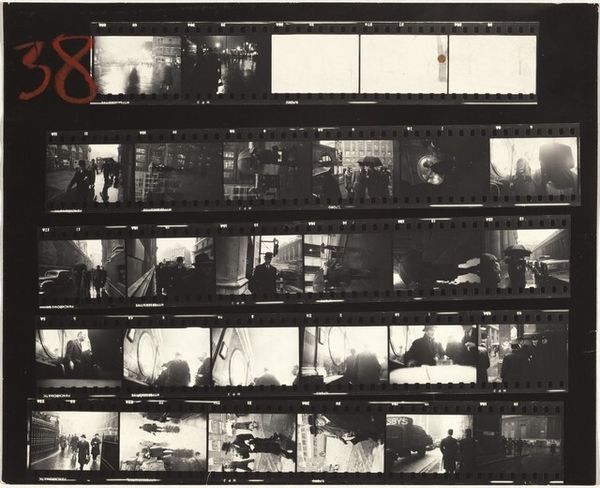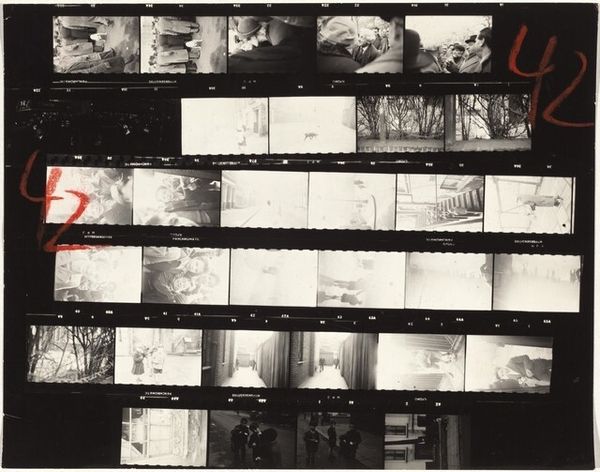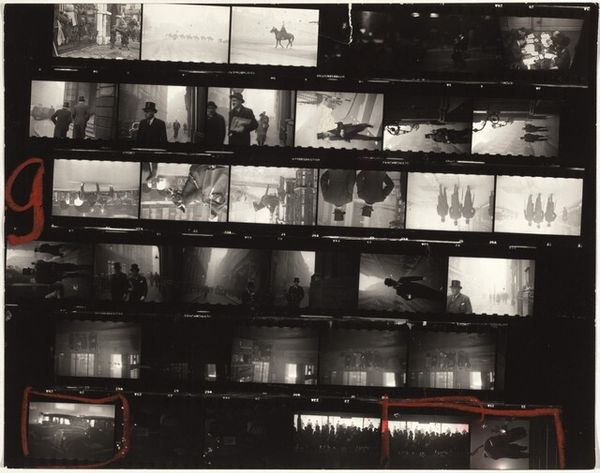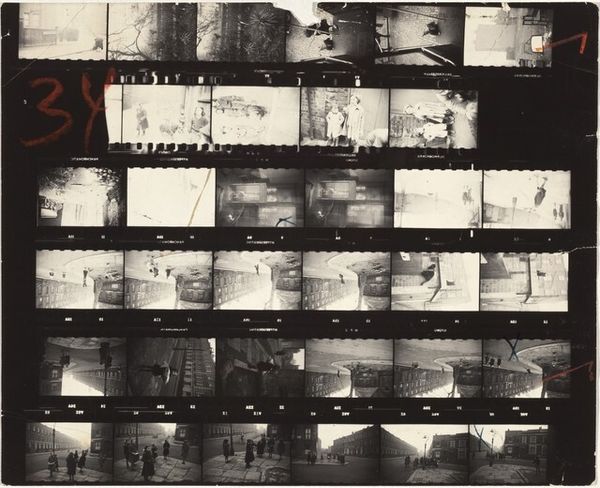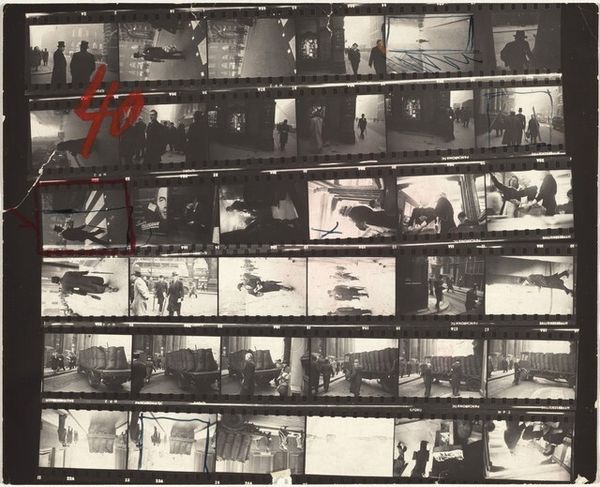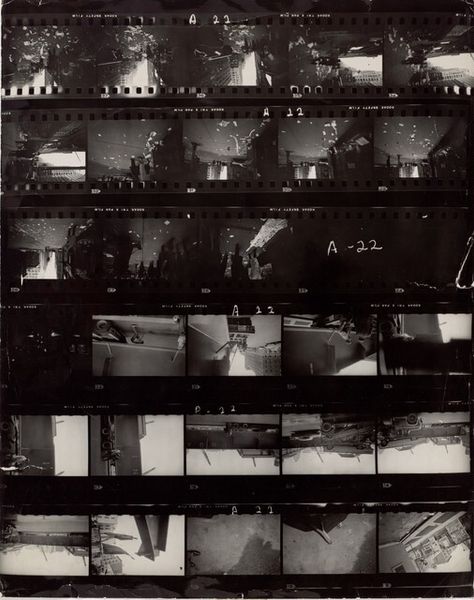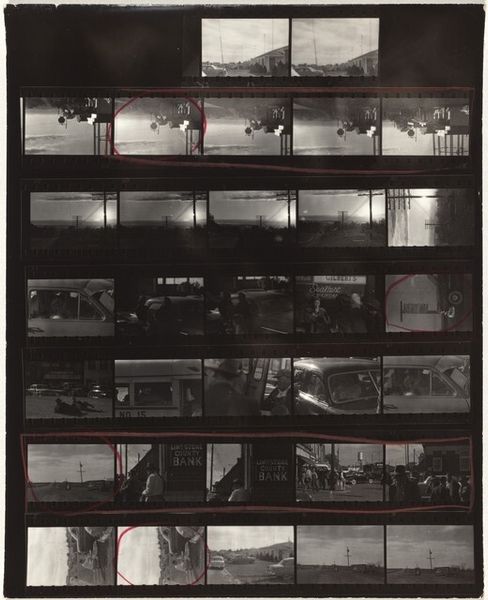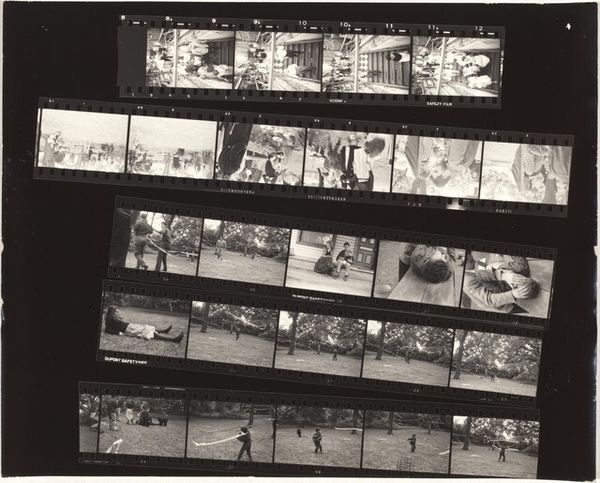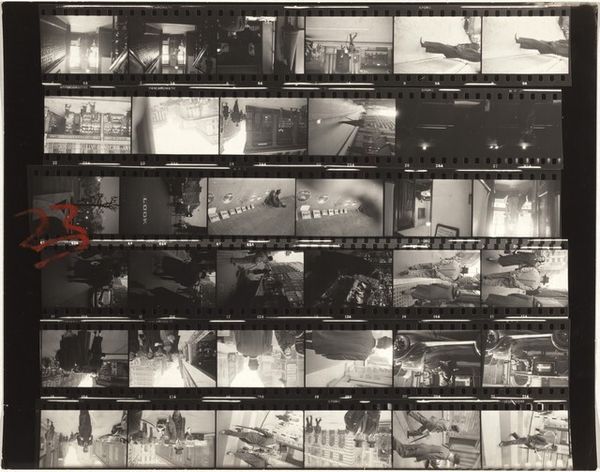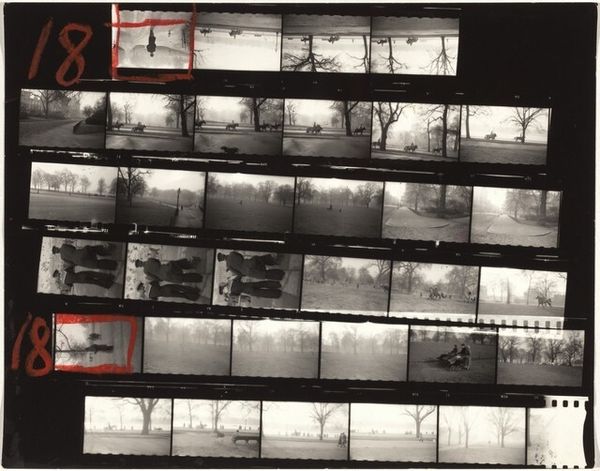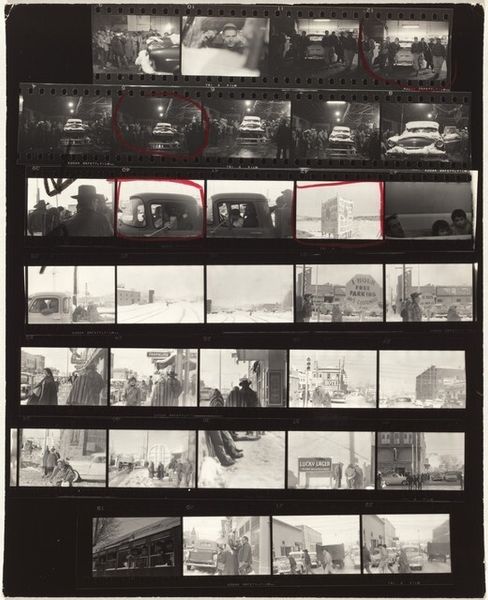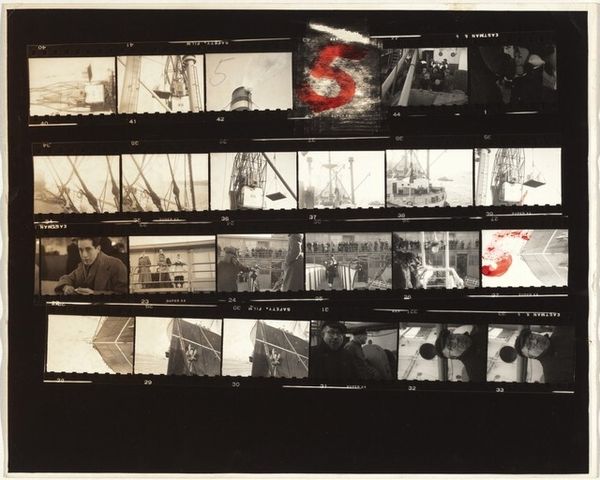
Dimensions: overall: 20.2 x 25.9 cm (7 15/16 x 10 3/16 in.)
Copyright: National Gallery of Art: CC0 1.0
Curator: We're looking at Robert Frank's "London 7," a gelatin silver print made between 1952 and 1953. It presents as a contact sheet, offering a series of glimpses into London street life. Editor: My first impression is one of fractured observation, almost voyeuristic. The tonal range, of stark blacks and cloudy grays, contributes to a sense of alienation. It’s visually raw. Curator: Absolutely. Consider that Frank was a Swiss photographer who came to London as an outsider, documenting everyday life through his unique lens. The visible marks on the contact sheet, and the variety of subjects chosen reveal something about his experience as an outsider and the culture he observed. The sequencing also suggests a narrative. Editor: Narrative, certainly, but the composition fascinates me. Note the framing; there’s repetition of forms and shapes within each individual frame. The dark borders highlight the fragmented nature, turning individual photographs into studies of pure shape, light, and dark. How would you suggest they tie together, if at all? Curator: I would argue it’s a social study. In some frames, individuals seem isolated, while in others, we see people engaging in mundane activities: walking, pushing carts, waiting at corners. It really presents a snapshot of post-war London society with hints of hope but lingering struggles, a social stratification very much in plain view. The grainy texture lends a certain vulnerability to the subjects as well. Editor: Vulnerability—yes, visually, the grain does contribute to the emotional impact. I keep returning to that high contrast. It’s so critical to defining this starkness, pushing the subjects almost into silhouette. It's almost abstract, more an essay in visual contrasts than in human empathy. Curator: I see it as both, really. While the abstraction and compositional elements are undoubtedly present, understanding Frank's broader body of work allows one to understand the role he plays, giving voice and visibility to working class struggles of mid-century European societies. Editor: Well, it is clear that either way you analyze it, “London 7” captures a striking—albeit fleeting—moment in time, rendered in an arresting, albeit fragmentary, visual language. Curator: Indeed. I appreciate the space it gives us to look closer not just at the aesthetic but also the broader historical framework it contributes to in the collective narrative.
Comments
No comments
Be the first to comment and join the conversation on the ultimate creative platform.
